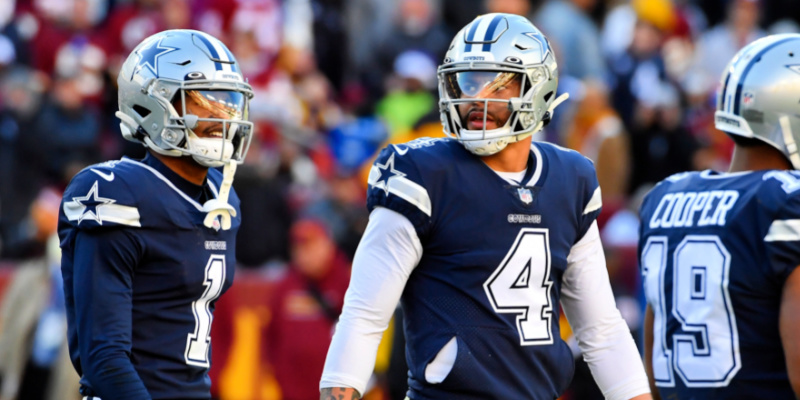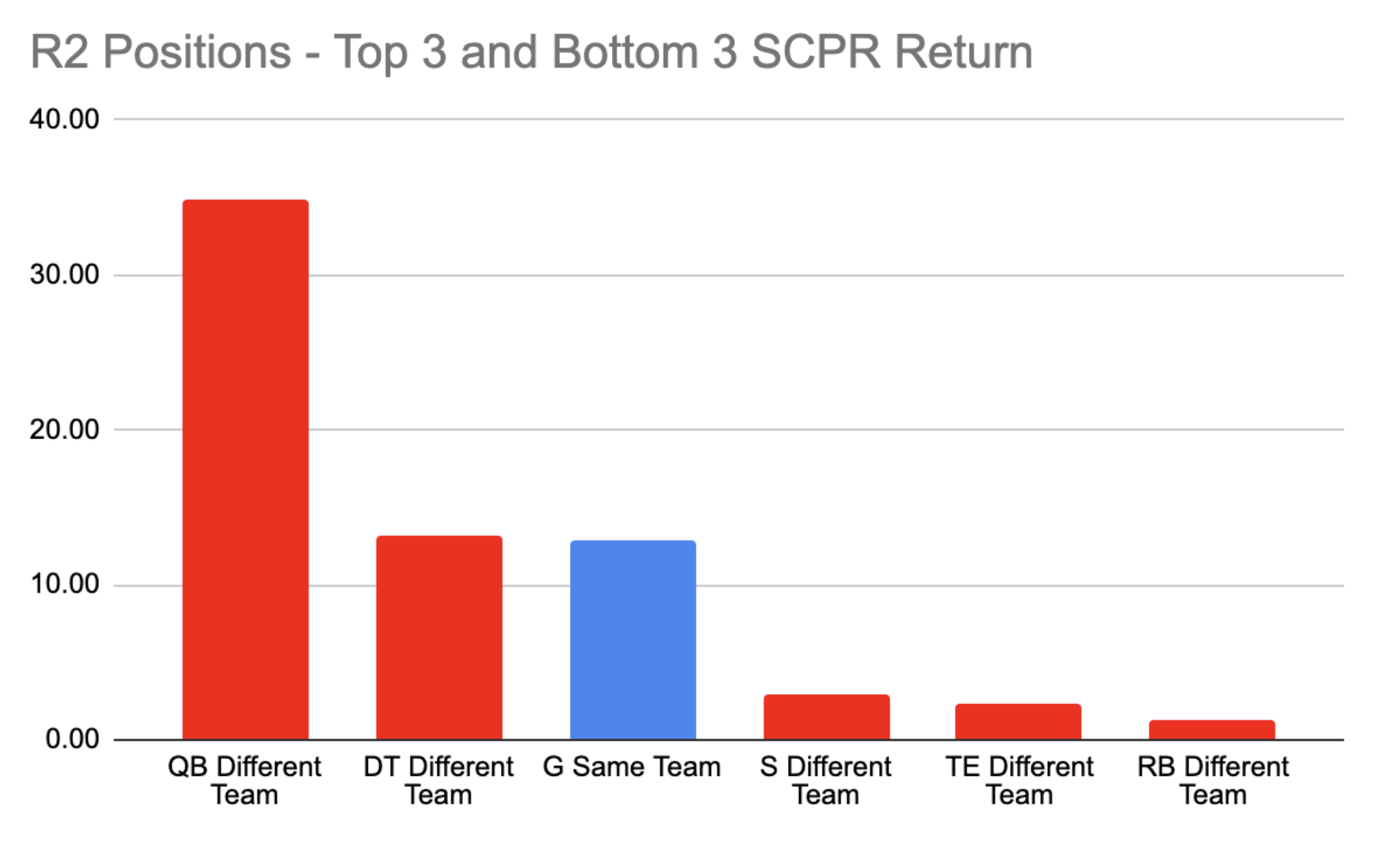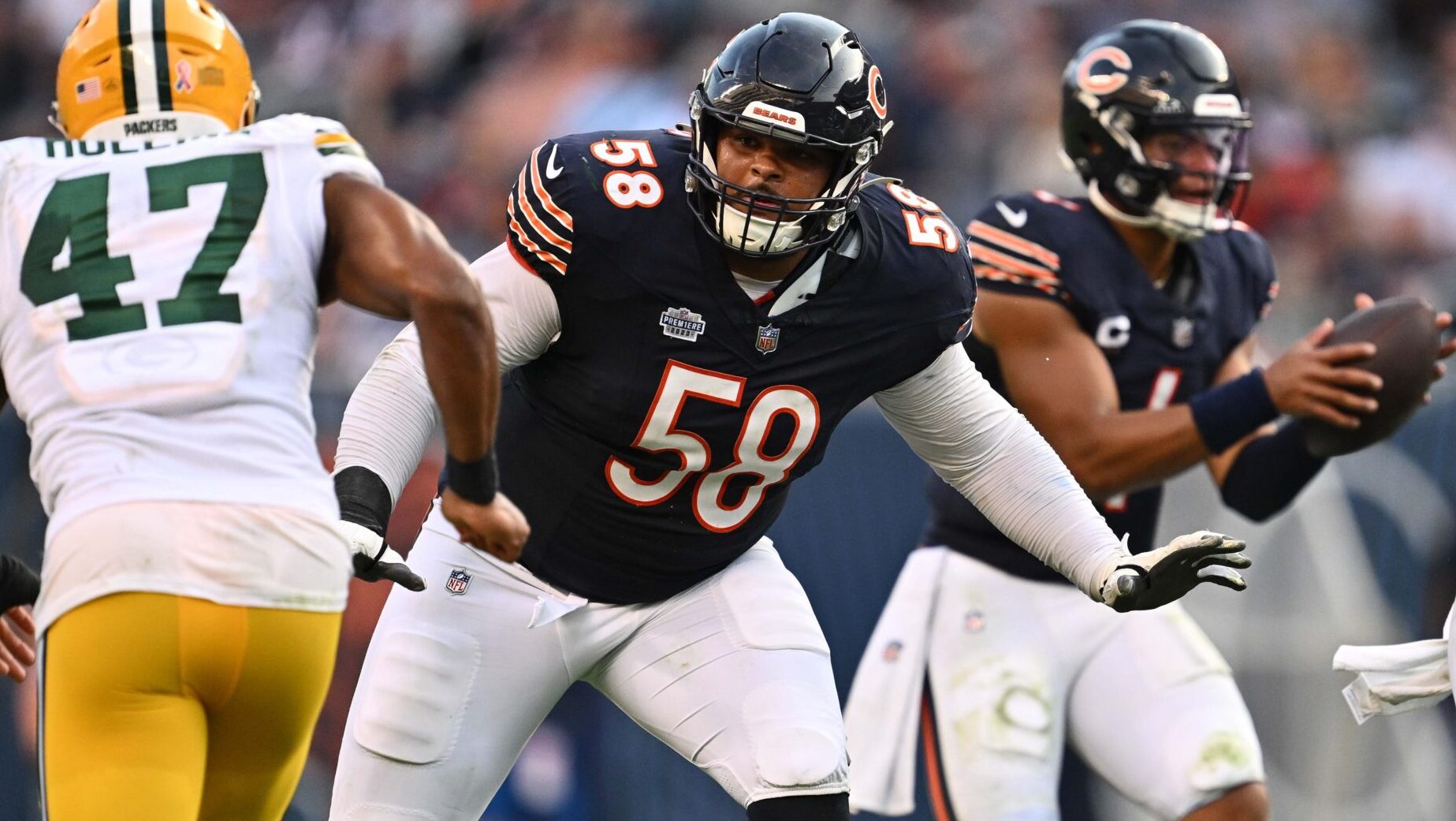Breakdowns
4/24/22
7 min read
The Hidden Reality of Draft Value: Part 4 — High Performing Positions per Round

The previous articles have informed us of the market inefficiencies with the draft pick pay scale and how the guaranteed money does not decrease in an evenly negative distribution. This may lead to teams to trade out of the position they currently pick into positions with less guaranteed money than they should have.
In the third part of this series, we discussed the positions that tend to be the best value in the first round with regards to the second contract the players sign and whether the contracts are with the team that drafted them.
In this piece, we will look at which positions tend to perform well and perform poorly based on Second Contract Pay Ratio (SCPR) in the rounds after the first round of the draft.
Round 2 Breakdown
The following chart details the top and bottom three positions picked in round two grouped by whether they signed their second contract with the same team or a different team.
- QBs appear to get more guaranteed money on the second contract relative to their first. In this case, it means a draft pick that has not panned out the way the original team would have wanted. A successful QB selected in the second round would equate to at least a second contract with the same team.
- Guards that sign with the same team are the third most successful position. This position accounts for just six guards, who signed for, on average, over thirty million guaranteed, resulting in an SCPR of just under thirteen. Guards appear to be excellent value picks in the second round.
- Safeties, tight ends and running backs should all be avoided in the second round, based on the drafts from 2010-2017, since they tend to either not secure a second contract or receive that contract from alternative teams.
- Three second-round safeties signed second contracts with their original team, four signing elsewhere. With only seven safeties signing second contracts altogether, this is highly discouraging.
- Only one tight end signed with the same team, compared to 11 tight ends signing with a new team.
Round 3 Breakdown
- For round three, wide receiver, defensive end and tackle provide the best returns, all with an incredible SCPR of over thirty.
- Each of these are premium positions but provide evidence to teams that they can be found in the middle rounds of the draft. In round one, wide receivers and tackles performed well, so perhaps doubling down on your first and third round picks is a viable strategy. Again, SCPR views long-term team building as the measure of a successful draft pick. If immediate needs are ignored, doubling down on these positions whether they are a current strength could be a good option.
- Defensive End appeared to be overvalued with round one picks, and perhaps undervalued by round three. This could be due to a premium placed on traits over production. If your team takes its DE in round three, four years from now, it is highly likely that it will have paid off.
- The fact that tackle appears both on the higher end of the spectrum and the lower end is interesting. This is potentially explained by a premium position getting offered another chance at a different team. Those tackles that do get signed to different teams get significantly less guaranteed money than the tackles that are extended with their original team.
Round 4 Breakdown
- QBs picked in the fourth round and getting to re-sign with the same team provide a huge SCPR score of over forty. Again, that states that they are receiving forty times more guaranteed money on their second contract than their first. These represent excellent draft picks. This high SCPR is to be expected given that the QB market pays out particularly compared to what a fourth round pick will get. It must be stated however that this column is heavily weighted by both Dak Prescott and Kirk Cousins.
- OLB and DE signing with different teams and performing similarly is worth noting. This category is actually represented by successful picks that have significantly outperformed their initial contract but then proceeded to cash in elsewhere. Examples in this category include Trey Flowers, Carl Lawson, De’Vondre Campbell. A pick in the fourth round may only equate to $500,000 in guaranteed money on that initial contract. Hitting on a pass rusher in this round is one of the most successful picks a team can make throughout their entire draft.
- Quarterbacks that sign with different teams get roughly the same amount of money guaranteed on their second contract as their first. We have entered the definition of journeyperson territory.
Round 5-7 Breakdown
For rounds five through seven, it is certainly harder to build for the long term, hence, striking on players with multiple contracts. Once again, these picks don’t have draft pedigree to fall back on, so they must put out quality film in their first few years in order to secure a second contract.
For this reason, we will change the measuring stick of SCPR and dial it back to just a second contract being signed as a successful pick. The rounds were grouped to provide the below table, which ignores whether the second contract is with the same team or a different team. It is sorted based on the positions with the most number of second contracts signed to the least amount.
| Position | Average SCPR | Count of Players |
| Linebacker | 65.87 | 21 |
| Defensive Back | 186.46 | 18 |
| Defensive Tackle | 112.63 | 16 |
| Running Back | 80.78 | 16 |
| Tackle | 167.43 | 16 |
| Tight End | 55.29 | 13 |
| Wide Receiver | 232.56 | 13 |
| Cornerback | 222.39 | 8 |
| Safety | 61.41 | 8 |
| Defensive End | 32.90 | 7 |
| Guard | 207.18 | 7 |
| Centre | 114.71 | 6 |
| Quarterback | 32.83 | 5 |
| Outside Linebacker | 77.63 | 3 |
| Nose Tackle | 132.75 | 2 |
- It’s interesting to note that linebacker, defensive back, defensive tackle, running back and tight end all perform well here. These are all positions that performed poorly based on SCPR in the earlier rounds, leading to the suggestion to take them later on in the draft. They also appear to be in the cluster of positions that hit the most in the later rounds.
- What is interesting about seeing tackles here is that they have consistently performed well in most rounds. It seems that based on the 2010-2017 draft data, tackles come in all shapes and sizes and can be found in every round, so take some swings at any point in the draft!
- The “developmental” quarterback in the later rounds or “the next Tom Brady” does not appear to be worth your time or currency. With only five quarterbacks signing second contracts (and for the lowest SCPR of 32.83), what value is picking a quarterback actually likely to give your team? Skip the temptation, they don’t appear to hit, so use your picks elsewhere.
Recap
- The league doesn't particularly need to be reminded about point one here, but quarterbacks must go early. The league is built on round one and round two quarterbacks. Previous drafting data shows that it is highly unlikely to get any long-term return on using a middle or late round pick on a quarterback.
- Tackles tend to perform differently to guards. Although tackles (particularly left tackles) historically were viewed as a much more premium position than the rest of the line, guards have been getting their time to shine lately. The Colts used the sixth overall pick on a likely gold jacket candidate in Quenton Nelson and most recently, the Jets traded up two third round picks to get Alijah Vera-Tucker. That being said, when studying the previous drafting trends, tackles perform well regardless of what round you take them in, but guards appear to perform better when left to the second to middle rounds.
- Safeties don’t score well in any particular round. With the general consensus that running backs age quickly and are replaced by the younger, newer model in the window. It would be interesting to deep dive on safeties too, being replaced by shinier toys. There is no round that suggests a safety is worth the pick, hence you either pick with the acceptance that it is likely to be one contract only or wait until the later rounds where it is no longer a premium asset
The next article of this series will be the final installment where we will take a look at what the greatest picks with regards to SCPR between 2010-2017 were and which team, if any, tends to perform better in their drafting process.











